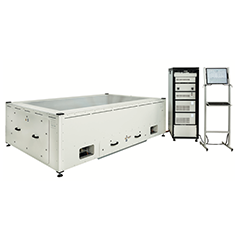The global photovoltaic industry is going through a rapid transformation that affects all parts of the value chain. Producers face an ever-increasing demand for modules and have to scale their operations at a very high pace. The manufacturers’ competition around offering the lowest levelized cost of electricity (LCOE) created a trend for larger modules, bifacial product variants, and the use of high-efficiency cells. Furthermore, producers increase their efforts to monitor and improve quality.
Simultaneously, the increasing demand for certifying module performance data drives the growth of independent laboratories and certification bodies to build and expand global service networks for module evaluation and testing.
Modern solar module designs require more sophisticated measurement techniques to capture IV characteristics and electroluminescence images accurately. The recent edition 3 of the IEC 60904-9 standard, reflects these new requirements by introducing a denser evaluation scheme for spatial uniformity to cater to modules with half-cut cells, and overall bigger sizes.
The standard for an improved evaluation of modules based on new cell technologies also requires testers to comply with adjusted spectral bands, within a broader spectral range from 300 nm to 1200 nm. With edition 3, the industry now has an official definition of an A+ rating for the spectral, spatial, and temporal characteristics of test equipment.
Productivity and trust within the photovoltaics industry are based upon reliable measurement technology. As a recognized provider of measurement solutions, h.a.l.m. elektronik GmbH supports these values by offering a product portfolio for solar cell and module testing for manufacturers and laboratories alike.



























